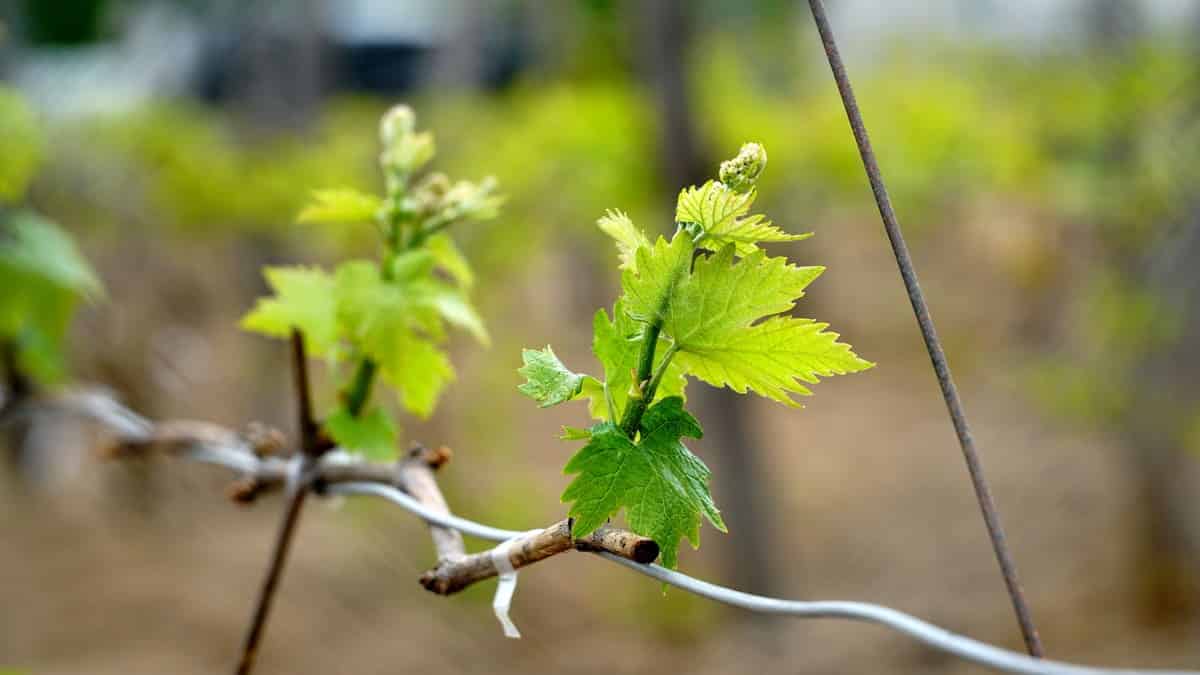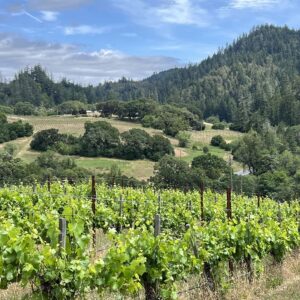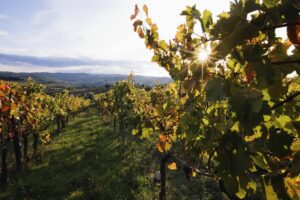Each season in the vineyard carries its own magic. Certain steps must be taken by the grapevine, and they all lead to wine. As vignerons, we must pay close attention, listening and watching. But this moment in Spring is when the grapevine makes a big gesture: budburst!
Budburst marks the beginning of the new harvest. And at our artisanal winery, we’re celebrating our grapevines making their grand entrance.
What is budburst?
Budburst is the hallmark of spring and occurs when the entire landscape begins to wake up. In the winter, grapevines go dormant. This is an essential part of the grapevines’ cycle; you can think of it as a deep sleep. Budburst is the yawn and the stretching of the arms.
When budburst happens, tiny green leaf tips begin to emerge from the buds of the grapevine. This is the first sign of life and an indication that the grapevine has begun directing its water and nutrients from the trunk up to the limbs. Their work begins now.
Different bursts for different grapes
Not all grapes sprout their shiny new green leaves at the same time. The best Anderson Valley wineries will be observing their first sign of green at different times, depending on what grapes they’ve planted. We here at Maple Creek Winery have our Artevino Chardonnay and Pinot Noir coming to life. Beyond Anderson Valley, wineries across the world will also experience it at different times.
Vineyards in the Northern Hemisphere will see budburst between early March and late April, while the Southern Hemisphere will see it in September and October.
Budburst tells us why sustainability matters
Budburst holds a story of why we must care about climate change, and why sustainability should be a guiding principle of winemaking. Warmer temperatures in winter can trick a grapevine into sprouting its leaves before winter is truly over. If budburst happens but then winter retreats back into a period of frost, the buds can become damaged from being exposed.
At our artisanal winery, we observe budburst as a teaching of how delicate our ecosystem is.
What’s next for the grapevine?
Now we can be on the lookout for tiny bunches of flowers. They’ll bloom from the vine shoots, and in time, be replaced by hard, green berries. As summer progresses and things heat up, those hard green berries will become soft and fleshy, filling with water and sugar.
But for now, we and the rest of the best Anderson Valley wineries are pausing to celebrate this spark of life. Be sure to appreciate the moment; it will be gone before you know it!




